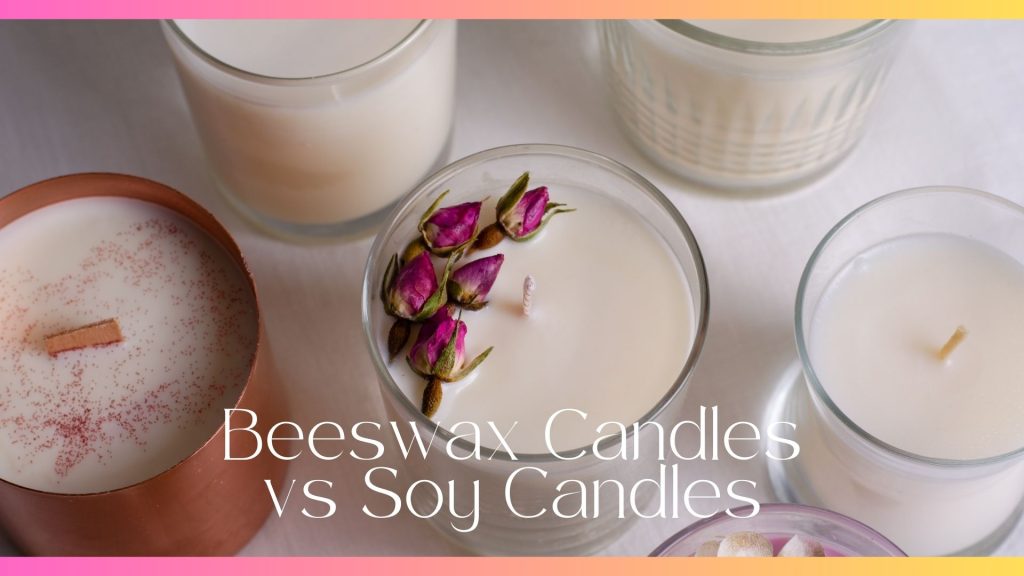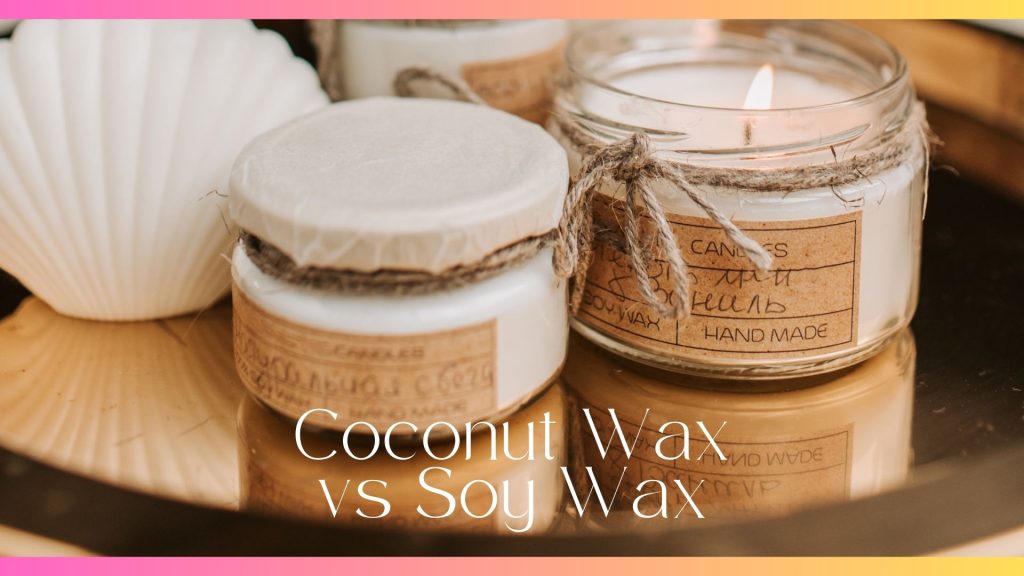Not sure if you can use essential oils in candles? Here’s what you need to know before you start doing it!
As scented candles gain popularity, especially among self-care lovers, there are questions on whether essential oils can be used in candles. It’s a quick and cheap way to have aromatherapy session at home but we all need to know the pros and cons, if any.
In this article, I’ll be sharing the basic things you should know about adding essential oils when making your candles. This includes practicality, benefits, tips and other important things to consider – as a candle maker and a candle user.
Disclaimer: This post may contain affiliate links. This means I may earn a small commission (at no cost to you) if you sign up for a program or make a purchase using my link!
Related Posts:
- 4 Things To Know On How Do Scented Candles Work?
- How To Use Scented Candles In 8 EASY Steps
- How Much Fragrance Oil To Add To Your Candles?
What Are Essential Oils?
If this is the first article you’ve read to understand essential oils, there’s definitely a lot more to consume for you to grasp better. As a start, you’ll have to know that essential oils are highly concentrated plant extracts that are derived from aromatic plants.
Various parts of the plant are used for extraction, which includes flowers, leaves, stems and roots. A distillation process is typically involved as water and oil is separated through steaming. The oils (final product) should carry the plant’s distinctive fragrance and therapeutic properties.
Thanks to the different benefits they have, essential oils are prized ingredients in aromatherapy and natural skincare products . These benefits vary with each type of plant and scent, as they all have their own unique aroma profile and therapeutic effects – ranging from calming and uplifting to invigorating and purifying.
Is It Possible To Use Essential Oils In Candles?
Although essential oils are often confused with fragrance oils, their compatibility with candle making is slightly different – and you should consider carefully before using it. Unlike synthetic fragrance oils, essential oils are more volatile which makes it evaporate and degrade easily when exposed to high temperatures during the candle-making process.
Essential oils also vary in their flash points i.e. the temperature at which they ignite, and this may pose safety concerns when used in candles. It’s best that as a candle-maker, you adhere to specific manufacturer guidelines, use essential oils with caution with the right dosage and blending techniques.
When possible, always go for high-quality essential oils from reputable brands or companies. Making candles using inferior or impure oils could produce undesirable results and you wouldn’t want this for candles you’re planning to sell.
3 Benefits of Using Essential Oils in Candles
Despite the limitations I’ve explained above, there are still great benefits to using essential oils in your candles. They’re a much more natural alternative compared to synthetic fragrances, as the latter may contain harmful chemicals and allergens. As a candle-maker, you’ll also have to list these possible concerns on your product labels for customers to know.
Ultimately, essential oils help individuals relax better and reduces their stress. If you’re not one to prioritize relaxation, you can also enjoy essential oils that are personalized to your needs e.g. uplifting, detoxing and awakening. Remember, there is an essential oil to suit every mood and preference!
Here are three benefits to using essential oils in your candles:
- Aromatherapy: Essential oils are therapeutic and can create a soothing atmosphere when used in candles. Different essential oils have different effects; for example, lavender essential oil (my favorite) is known to be calming, while peppermint ones are invigorating. Burning candles infused with essential oils can help promote relaxation, reduce stress, and improve moods.
- Natural scent: Unlike synthetic fragrances, essential oils contain natural aromas that is more pleasing to the nose. For the same reason, they’re more preferred by individuals who are sensitive to synthetic fragrances and looks for natural products.
- Customization: The ability to customize creations is a reason why candle makers love using essential oils in their candles. They are able to customize to personal preferences and specific needs, whether the preference is for floral, citrus, woody, or herbal scents. This allows them to create unique blends for their brands and cater to niche markets or reach a wider audience.
8 Tips for Using Essential Oils in Candles
To make it easier for new candle-makers exploring the use of essential oils for candles, I’ve compiled some tips you can keep in mind.
Here are eight best practices when adding essential oils to your candle mixture:
- Choose quality essential oils: Like I’ve mentioned above, go for pure essential oils from reputable sources that are suitable for candle making. They should not be diluted with synthetic additives, so as to have a more potent scent and better therapeutic benefits.
- Consider flash points: Avoid using oils with low flash points in candles, as they may pose a fire hazard. Stick to oils with higher flash points as a safety precaution.
- Dilute your essential oils: Due to their potency, it’s best to dilute essential oils with a carrier oil or wax-compatible solvents before adding them to your candle wax. This helps to disperse the fragrance evenly and prevent the oils from evaporating too quickly.
- Test for compatibility: Before committing to a large batch, conduct small-scale tests to assess the compatibility of essential oils with your chosen candle wax e.g. soy wax, beeswax or coconut wax. You’ll figure out the optimal fragrance load better this way.
- Measure oils carefully: It’s important to measure essential oils accurately when adding them to your candle wax. Follow recommended guidelines for the amount needed per ounce of wax. Adding too much oil can affect the candle’s burn quality, while adding too little may result in a weak fragrance.
- Blend thoughtfully: Experiment with different oil combinations to create unique scents based on the intended mood or purpose of the candle. Start with small test batches to gauge the aroma strength and compatibility of oils. If they’re good, you should keep detailed records of your experiments to easily replicate in future.
- Add the oils at the right temperature: To ensure that the essential oils disperse evenly throughout the candle wax, add them when the wax has cooled slightly but is still liquid and pourable. Adding oils at too high a temperature can cause them to evaporate or degrade, diminishing their scent and therapeutic properties.
- Stir gently and thoroughly: After adding essential oils to the melted wax, stir the mixture gently but thoroughly to ensure that the oils are evenly distributed. Use a clean utensil, such as a wooden stick or stainless steel spoon, to avoid contaminating the oils with any residue. Take care not to introduce air bubbles into the wax, as they can affect the candle’s appearance and burn.
By following these tips, you should be able to achieve optimal balance of fragrance and performance in essential oil candles.
Bottom Line
There are definitely benefits to using essential oils in your candles but you’ll need to explore with caution. The two major things to consider is the safety of candles and how it affects the candle’s performance.
Read up online guidelines on best practices and test with every small batch of candles you make. It’s best to stick to smaller batches of candles instead of making large ones as it is much easier to make comparisons without wastage. Have fun exploring!


